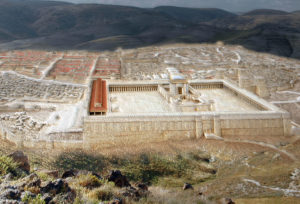I HAD TO ERASE FROM MY HEAD the picture I had of Jesus nailed to a cross. That’s after spending a year researching my book, Eyewitness to Crucifixion.
Four Gospel writers reporting eyewitness accounts of the crucifixion of Jesus don’t describe the execution device as a cross.
In fact, they don’t describe the device at all.
They use a generic Greek word, stauros, which Homer and other Greek writers used to talk about a stake or a fence post.
Romans used the word that way, too. But they added new uses to the word. They used it to talk about a T-shaped cross, or just the crossbar, or an impaling stake, or even a tree. Yep, they suspended people from trees.
Romans crucified people using all of those methods.
We think of crucifixion with Jesus in mind, nailed to a T-shaped cross.
Roman’s didn’t.
“I see right in front of me different kinds of crosses….Some hang their victims upside down. Some impale them….Others stretch out their arms onto forked poles.”
That’s Seneca talking. He was a trusted adviser of Nero, emperor who launched the Roman persecution of Christians.
More surprises
There were other surprises for me in the research, too.
- Try to find Jesus falling down under the weight of the cross. It’s not there. We presume it because Romans called in Simon from Cyrene to carry the cross (Matthew 27:32). But no one says Jesus fell.
- Try to find a Gospel writer saying Jesus was nailed to anything: cross, stake, or tree. It’s not there. We presume it because Doubting Thomas said he needed to see the nail wounds (John 20:25) and because Paul said Jesus was nailed (2 Corinthians 13:4).
But Paul never claimed he saw the crucifixion. Thomas was supposed to be in hiding with the other disciples “afraid of the Jewish leaders” (John 20:19), though it’s possible he was among a group that “stood at a distance and watched” (Luke 23:49).
Why presume Jesus was nailed to a cross?
Short answer.
Try to find an ancient picture of Jesus hanging on a pole.
There are several 2,000-year-old pictures of Jesus crucified. Scratched as graffiti on a wall and etched into jewelry.
He’s always on a cross. I’ve got several pictures in my book. (You can see them on my website, too. Go to Eyewitness to Crucifixion and flip to the back of the book.)
The cross is where early church writers put him, too—describing what Gospel writers had skipped.
Still, I hold more loosely to the image of Jesus nailed to a cross than I did a year ago.
I wasn’t at the crucifixion. So, there’s no reason for me to paint a picture in my head as though I was.
I don’t need to sanctify an imagined picture of crucifixion as holy.
I don’t need a picture-perfect Jesus, crucified just the right way.
There’s nothing holy about any version of the picture. They are all wretched.
As much as we might want to know the details of the crucifixion, curious souls that we are, the how-to doesn’t matter.
It should, perhaps, be enough to know that he died. And that “with his own body, carried our sins to his death on the tree” (1 Peter 2:24).
The writer adds, “Sin is dead to you now. Live to do good.”
How to do good
If ever in our life there has been a time to do good, this is that time.
And where do we find ourselves, but sequestered in our house, some of us clapping at 6 o’clock Central Time for those we don’t know how else to help half a country away.
Still, we have a lifesaving gift to give to the entire world.
The gift is elbow room.
Takeaway quote
What an opportunity to help others by not being there for them.
Easter time videos
Here are links to some Easter season videos I’ve done. You might find one among them that’s helpful, I hope.
Peace to you. Stay safe. I mean it.


I’m always impressed with your boldness, Steve, in challenging our traditional views on Christian history. Indeed it’s hard to image that, with people being executed on a regular basis, the Romans would go to the trouble of building crosses for each. Especially when it was common for some bodies to be left to rot on these posts if left unclaimed.
Crucifixion was designed to be horrible and humiliating. Most likely the process was as basic and primitive as possible.